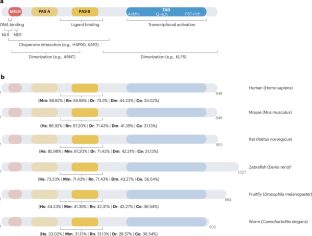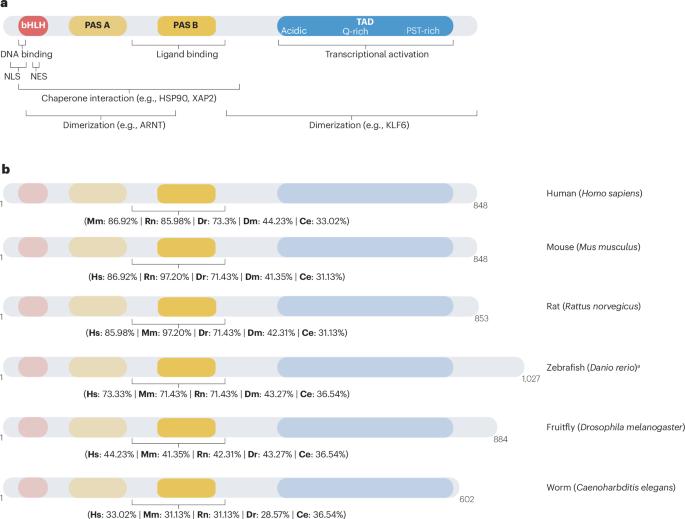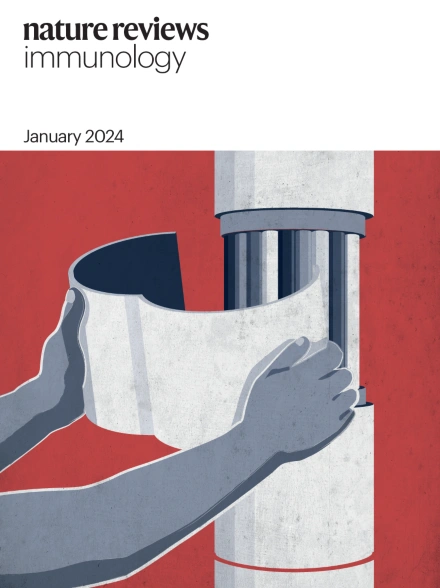The role of the AHR in host–pathogen interactions
IF 67.7
1区 医学
Q1 IMMUNOLOGY
引用次数: 0
Abstract
Host–microorganism encounters take place in many different ways and with different types of outcomes. Three major types of microorganisms need to be distinguished: (1) pathogens that cause harm to the host and must be controlled; (2) environmental microorganisms that can be ignored but must be controlled at higher abundance; and (3) symbiotic microbiota that require support by the host. Recent evidence indicates that the aryl hydrocarbon receptor (AHR) senses and initiates signalling and gene expression in response to a plethora of microorganisms and infectious conditions. It was originally identified as a receptor that binds xenobiotics. However, it was subsequently found to have a critical role in numerous biological processes, including immunity and inflammation and was recently classified as a pattern recognition receptor. Here we review the role of the AHR in host–pathogen interactions, focusing on AHR sensing of different microbial classes, the ligands involved, responses elicited and disease outcomes. Moreover, we explore the therapeutic potential of targeting the AHR in the context of infection. The aryl hydrocarbon receptor (AHR) can sense and initiate immune responses to many different infectious organisms. Here, Moura-Alves and colleagues review the role of the AHR in host–pathogen interactions and explore the therapeutic potential of targeting the AHR in the context of different infectious diseases.



AHR 在宿主与病原体相互作用中的作用
宿主与微生物相遇的方式多种多样,结果也各不相同。需要区分三大类微生物:(1) 对宿主造成伤害且必须加以控制的病原体;(2) 可以忽略但必须控制较高丰度的环境微生物;(3) 需要宿主支持的共生微生物群。最近的证据表明,芳基烃受体(AHR)能感知并启动信号和基因表达,以应对大量微生物和感染条件。它最初被认为是一种与异种生物结合的受体。然而,后来发现它在免疫和炎症等众多生物过程中发挥着关键作用,最近又被归类为模式识别受体。在此,我们回顾了 AHR 在宿主与病原体相互作用中的作用,重点是 AHR 对不同微生物类别的感应、所涉及的配体、引起的反应和疾病结果。此外,我们还探讨了在感染情况下靶向 AHR 的治疗潜力。
本文章由计算机程序翻译,如有差异,请以英文原文为准。
求助全文
约1分钟内获得全文
求助全文
来源期刊

Nature Reviews Immunology
医学-免疫学
CiteScore
93.40
自引率
0.40%
发文量
131
审稿时长
6-12 weeks
期刊介绍:
Nature Reviews Immunology is a journal that provides comprehensive coverage of all areas of immunology, including fundamental mechanisms and applied aspects. It has two international standard serial numbers (ISSN): 1474-1733 for print and 1474-1741 for online. In addition to review articles, the journal also features recent developments and new primary papers in the field, as well as reflections on influential people, papers, and events in the development of immunology. The subjects covered by Nature Reviews Immunology include allergy and asthma, autoimmunity, antigen processing and presentation, apoptosis and cell death, chemokines and chemokine receptors, cytokines and cytokine receptors, development and function of cells of the immune system, haematopoiesis, infection and immunity, immunotherapy, innate immunity, mucosal immunology and the microbiota, regulation of the immune response, signalling in the immune system, transplantation, tumour immunology and immunotherapy, and vaccine development.
 求助内容:
求助内容: 应助结果提醒方式:
应助结果提醒方式:


